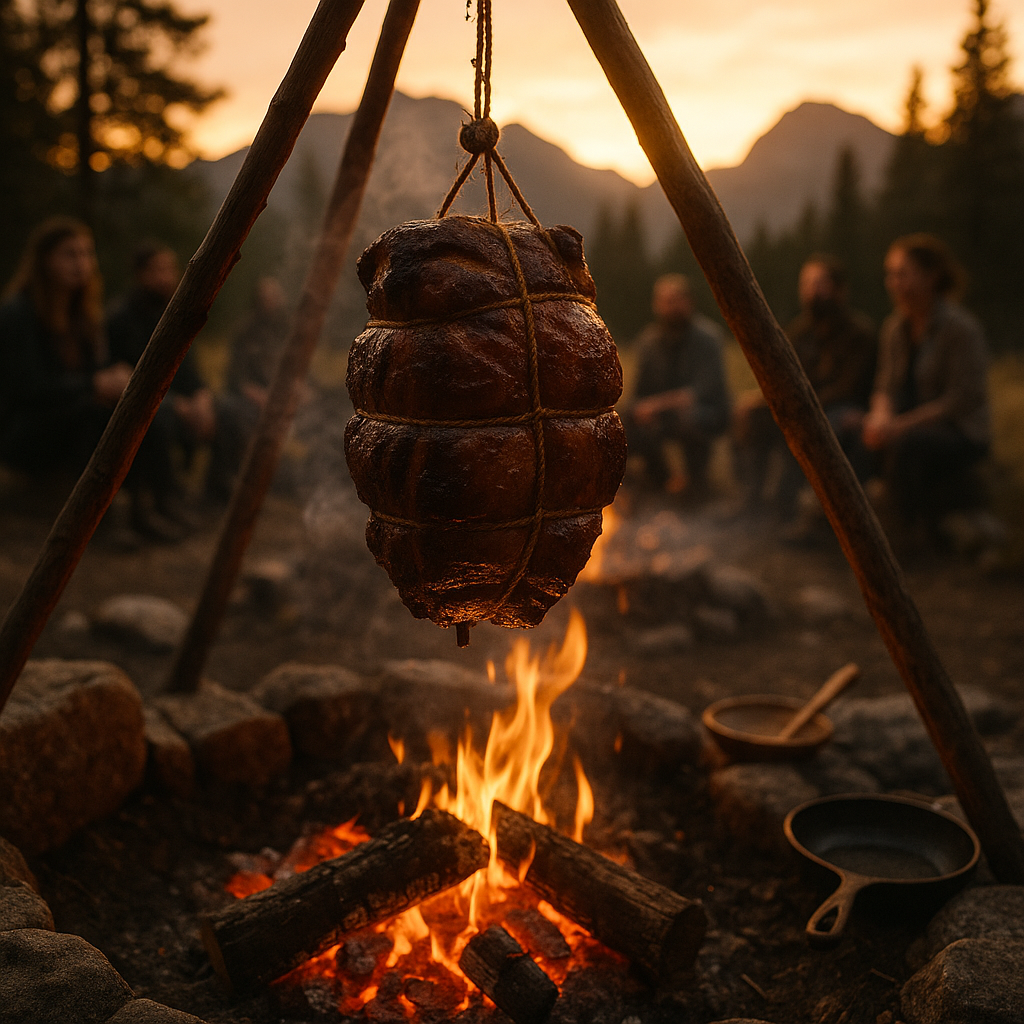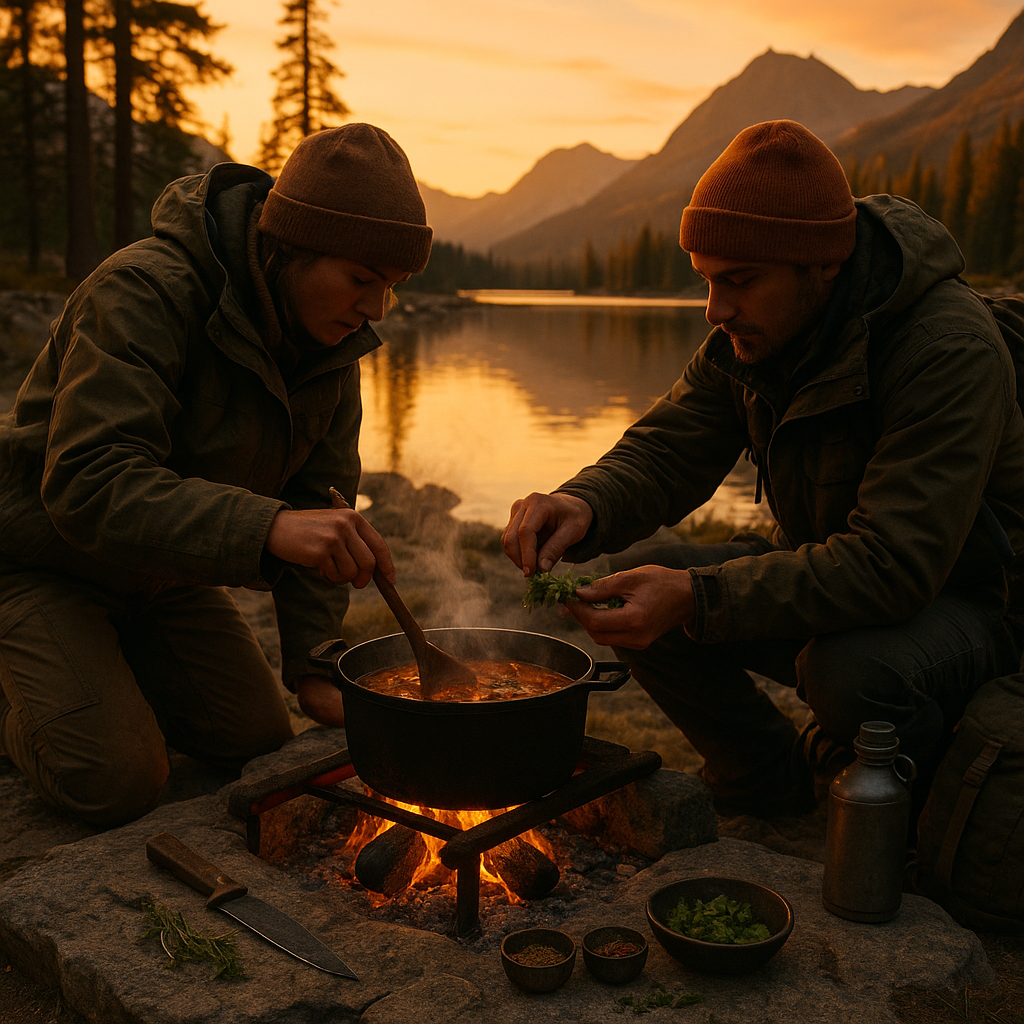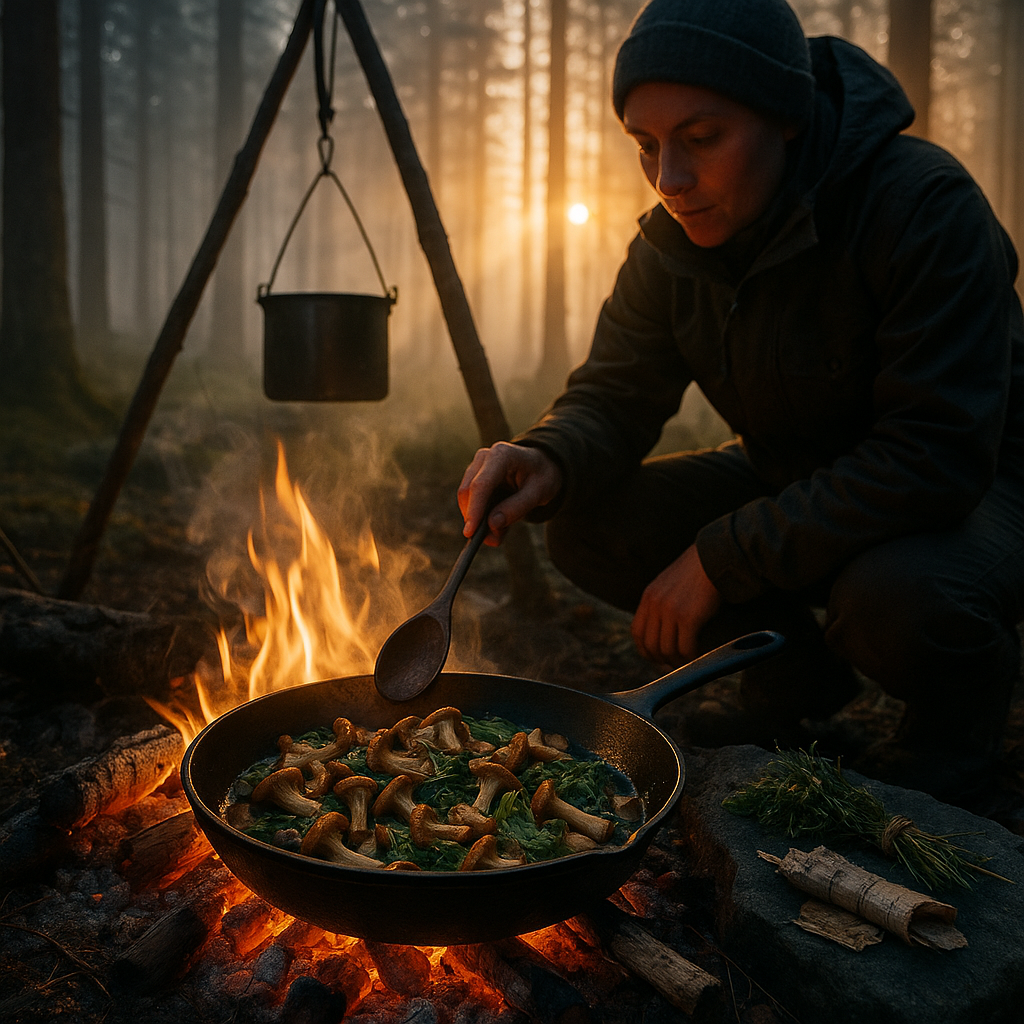Key Takeaways
- Turn survival cooking into an everyday skill. Move beyond survival-mode thinking by treating off-grid cooking as a way to master sustainable, resourceful techniques you can apply to everyday life.
- Master alternative heat sources with ease. Learn to harness tools like solar ovens, makeshift grills, campfires, and earth ovens for versatile, dependable off-grid cooking.
- Essential ingredients simplify survival menus. Stock your pantry with versatile staples (grains, legumes, spices) that maximize nutrient-dense, adaptable meals in any setting.
- Prepare makeshift cooking stations efficiently. Create stable and effective outdoor setups using natural materials such as stones, sand pits, or DIY tripod grills.
- Discover primitive cooking for modern times. Techniques like clay baking or ember pit cooking blend old-world methods with modern resourcefulness, offering unique flavors and memorable experiences.
- Emergency meals don’t have to be boring. Develop basic survival recipes that elevate simple ingredients into comforting, flavorful dishes, even with limited resources.
- Solar cooking proves power isn’t necessary. Utilize renewable energy with portable solar cookers for slow, efficient, and eco-friendly meal preparation wherever sunlight reaches.
- Adapt for any scenario with creative tools. Improvised cookware (converted tin cans, broad leaves, flat stones) offers endless possibilities for innovative meals and new traditions.
- Survival cooking builds self-reliance and creativity. More than just sustenance, it fosters adaptability and imagination, transforming cooking into an enriching adventure.
Survival cooking doesn’t have to feel like a chore. It can be an empowering journey into sustainability and skill-building. In the sections ahead, you’ll discover effective techniques, recipes, and insights designed to help you level up your off-grid culinary expertise.
Introduction
Beneath a wide-open sky, cooking transforms from a daily habit into a lesson in resilience and creativity. Survival cooking is not simply about enduring blackouts or unexpected nights outdoors. It is a hands-on invitation to rediscover ancient techniques and resourceful thinking in any environment, from mountain clearings to city balconies during a power outage.
Mastering off-grid cooking methods, from makeshift grills to harnessing the midday sun with a solar oven, delivers more than just the ability to prepare food without electricity. This journey cultivates practical skills, nurtures a spirit of sustainability, and whispers the deep satisfaction that comes with turning humble, gathered ingredients into memorable meals anywhere. Let’s explore how survival cooking opens the door to self-reliance, adaptability, and real culinary adventure.
The Mindset Shift: Beyond Emergency Preparedness
Redefining Survival Cooking
Survival cooking extends far beyond its roots in crisis management. Today, it emerges as a sophisticated lifelong practice, where ancestral wisdom and modern creativity merge. Cooking becomes both an expressive art and an essential life skill, requiring the harmony of fire manipulation, ingredient adaptation, and mindful resource use. With each meal prepared under the open sky or in the simplest of shelters, we forge a deeper connection to the land and our food.
Stay Sharp. Stay Ahead.
Join our Telegram Channel for exclusive content, real insights,
engage with us and other members and get access to
insider updates, early news and top insights.
 Join the Channel
Join the Channel
The Modern Context
In our current era, survival cooking techniques hold remarkable utility far outside classic wilderness scenarios. They enhance sustainable living, empower us during power outages, and enrich outdoor gatherings. Across diverse communities, modern cooks report a surge in primitive cooking practices. For example, in a Seattle-based outdoor cooking community, over three-quarters of members now blend traditional techniques into daily routines, drawn by both flavor and energy savings.
These skills shape a foundation for meaningful culinary innovation. As these practices weave into everyday life, they inspire us to look more closely at the essential techniques underpinning the survival cooking ethos.
Core Techniques and Methods
Fire Mastery
Mastering fire is both art and science, a dance between fuel, oxygen, and heat. Different fire structures serve unique purposes, empowering cooks with flexible temperature control:
- Dakota fire holes concentrate heat and shield flames from the wind, crafting a naturally efficient stove.
- Swedish torch setups provide stable, elevated surfaces for pots or grilling, ideal for small spaces.
- Three-stone fires adapt seamlessly to uneven ground, suspending pots or kettles for simmering, boiling, or frying.
By choosing the right setup, the off-grid chef can maintain precise cooking temperatures and adapt to any environment, much like a seasoned guide reading weathered trails.
Alternative Heat Sources
Survival cooking thrives on innovation, tapping into the energy of sun, earth, and ingenuity:
- Solar ovens slowly harness sunlight for gentle roasting, bread baking, and even water purification in sun-drenched clearings.
- Earth ovens, or pit ovens, allow for overnight roasting; meats and root vegetables emerge tender, imbued with smoky earthiness.
- Hot rock cooking employs river stones or volcanic rocks, transferring heat directly to flatbreads, fish, or greens.
- Friction-based heating, while labor-intensive, showcases the power of resourcefulness in boiling small quantities of water or preparing emergency meals.
These adaptable strategies reduce dependency on conventional fuels and invite deeper experimentation alongside sustainability. The expansion of these natural techniques flows seamlessly into thoughtful equipment adaptation.
Equipment Adaptation and Innovation
Minimalist Kitchen Essentials
Outdoors, the kitchen toolkit shrinks to only the most versatile and reliable implements:
- Cast iron pans and Dutch ovens, prized for their heat retention and indestructibility.
- Nesting mess kits, inspired by military designs, streamline transport and minimize clutter.
- Multi-tool utensils and robust knives, ready for everything from splitting firewood to slicing foraged greens.
Adversity sparks creativity, visible in the trend of “frameless cooking” where inventive minds prepare entire meals using only natural materials gathered on-site. This ethos is increasingly popular with adventure chefs, for whom every object doubles as a potential tool.
Natural Material Integration
Learning to read the land broadens culinary horizons:
- River stones and slate become griddles for pancakes and flatbreads, warmed over coals.
- Green bamboo or wild reeds transform into improvised steamers or baking molds, infusing food with subtle woody notes.
- Clay, hand-sculpted into rudimentary ovens, locks in moisture for juicy, slow-cooked meats and woodland vegetables.
- Oversized leaves or bark serve as natural wraps or platters, facilitating steaming and aromatic roasting.
These adaptations enrich outdoor cooking for enthusiasts and professionals alike, revealing possibilities for sustainable feasts. As we learn to collaborate with nature, the focus shifts to smart ingredient selection and time-proven preservation.
Ingredient Selection and Preservation
Strategic Sourcing
Survival cooking demands a resourceful mindset, balancing shelf stability with wilder flavors:
- Shelf-stable staples like rice, oats, dried legumes, and powdered milk form the nutritional backbone for any survival pantry.
- Seasonally foraged treasures (wild herbs, edible flowers, berries, and mushrooms) bring freshness and variety.
- Dehydrated mixes (soups, stews, jerky, fruit leathers) offer nourishment on long journeys.
- Local resource identification (spruce tips, wild garlic, cactus fruit) elevates simple dishes and sustains cooking diversity.
A survey of wilderness cooks revealed that two-thirds curated a blend of compact nonperishables and seasonal finds, creating resilient, flexible menus for unpredictable circumstances.
Preservation Techniques
Both ancient and contemporary preservation methods have a place in the off-grid kitchen:
- Smoking (using hardwoods such as mesquite, hickory, or apple) imparts complex flavors and extends shelf life for proteins and cheeses.
- Solar dehydration transforms garden produce and wild foraged fruits into nutrient-dense snacks.
- Fermentation (sauerkraut, kimchi, sourdough) leverages beneficial microflora for both long-term storage and probiotic value.
- Salt curing delivers reliable preservation for fish and meats, a technique as relevant to urban homesteaders as to backcountry explorers.
Contemporary chefs and home cooks are reviving these heritage methods for both utility and unforgettable tastes, connecting the present with centuries-old culinary tradition. These insights set the stage for adapting survival cuisine to vastly different environments.
Environmental Adaptation
Climate Considerations
Cooking off the grid often means working in diverse and challenging climates:
- Deserts require extra vigilance to retain moisture in both food and body; earth ovens and tight foil wraps are critical allies.
- Humid tropics challenge food preservation; smoking and fermentation become dominant techniques, while fire-building strategies pivot to account for damp wood and heavy air.
- High-altitude kitchens demand longer cooking times and patience, as water boils at lower temperatures and doughs rise sluggish





Leave a Reply